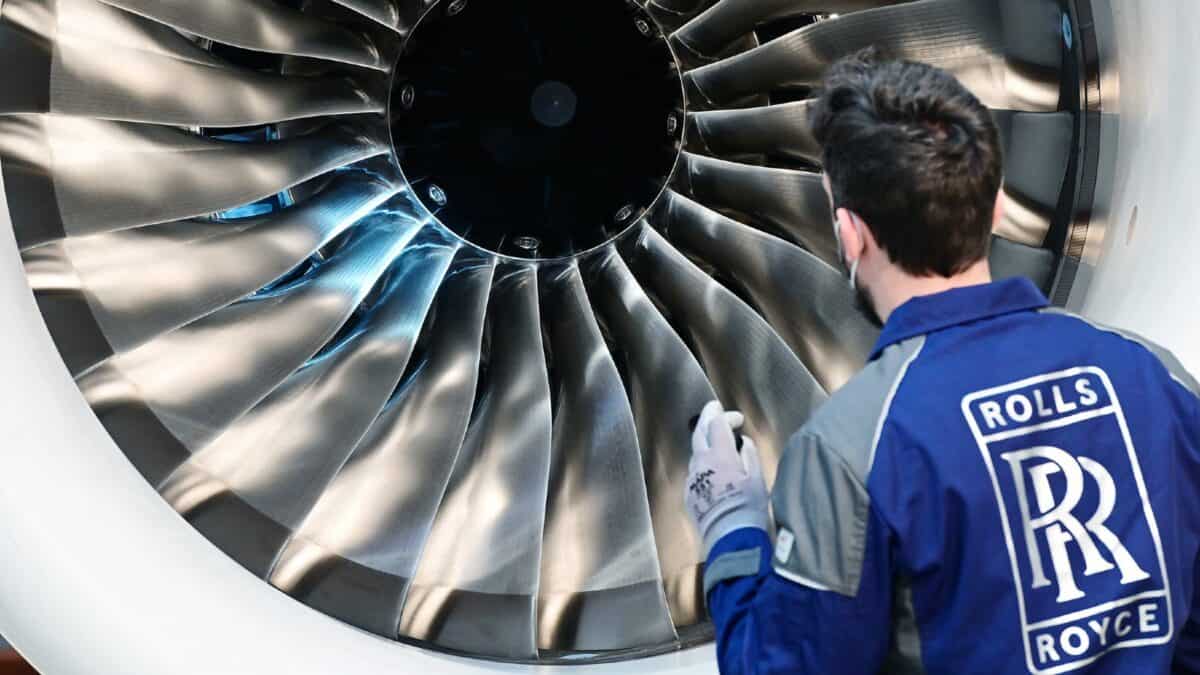Now Reading: Can the Rolls-Royce share price hit £13 in the coming year?
-
01
Can the Rolls-Royce share price hit £13 in the coming year?
Can the Rolls-Royce share price hit £13 in the coming year?


Image source: Rolls-Royce plc
The past year has seen Rolls-Royce (LSE: RR) perform spectacularly. In just 12 months, the Rolls-Royce share price has soared 77%. If it achieves the same growth in the next year, the share will break the £13 barrier.
Past performance is no guide to what to expect next in the stock market, of course. But it is worth noting that the recent performance of the Rolls-Royce share price is not a one-off. It was the strongest performer among any FTSE 100 share in 2023 – and among the best performers in 2024.
That stunning rebound after selling for pennies apiece in 2022 reflects an improved business performance alongside ambitious medium-term targets.
If things continue going well, then, might the same factors keep pushing the Rolls-Royce share price up over the next 12 months? If so, should I invest now?
Good opportunities but also significant risks
Clearly, current management has step-changed performance at the company.
If that continues, for example with a keen focus on costs and also on the profitability of new business wins, it could be good for revenues and especially earnings.
The company is also operating in an environment that currently plays to its strengths.
Civil aviation demand has boomed in recent years, translating to more airlines buying engines as well as servicing existing ones. On top of that, multiple European governments have announced plans to ratchet up defence spending in a way not many would have expected just a few years ago.
But while there are reasons to be optimistic about the outlook for Rolls, I also see multiple grounds for caution as an investor.
The current chief executive has likely now wrung the easy savings out of the business. It may become harder work to cut costs as time goes by.
Meanwhile, several US airlines have recently reported weaker passenger demand in some areas, which could signal that the recent boom years for civil aviation are winding down.
On top of that, one perennial risk that faces civil aviation is an event that suddenly hurts demand. The recent Heathrow closure was a reminder of that. More sustained downturns can have dramatic impact, as seen during the pandemic – but engine makers like Rolls have no control over them.
The share already looks pricey
Given all of that, I do not find the current Rolls-Royce share price-to-earnings ratio of 25 attractive.
In fact, to me it looks pricey and for that reason I am not planning to buy the shares.
I recognise that the company’s ambitious medium-term targets mean that the prospective valuation may be more attractive if earnings per share grow. But targets are one thing – there is no guarantee that the company will be able to achieve them.
I think the expectation of delivering is already built into the price. So, in the next year, unless there is outstanding news about its business performance, I see no reason for Rolls-Royce to achieve a much higher valuation ratio, as it would need to for the share price to hit £13.























